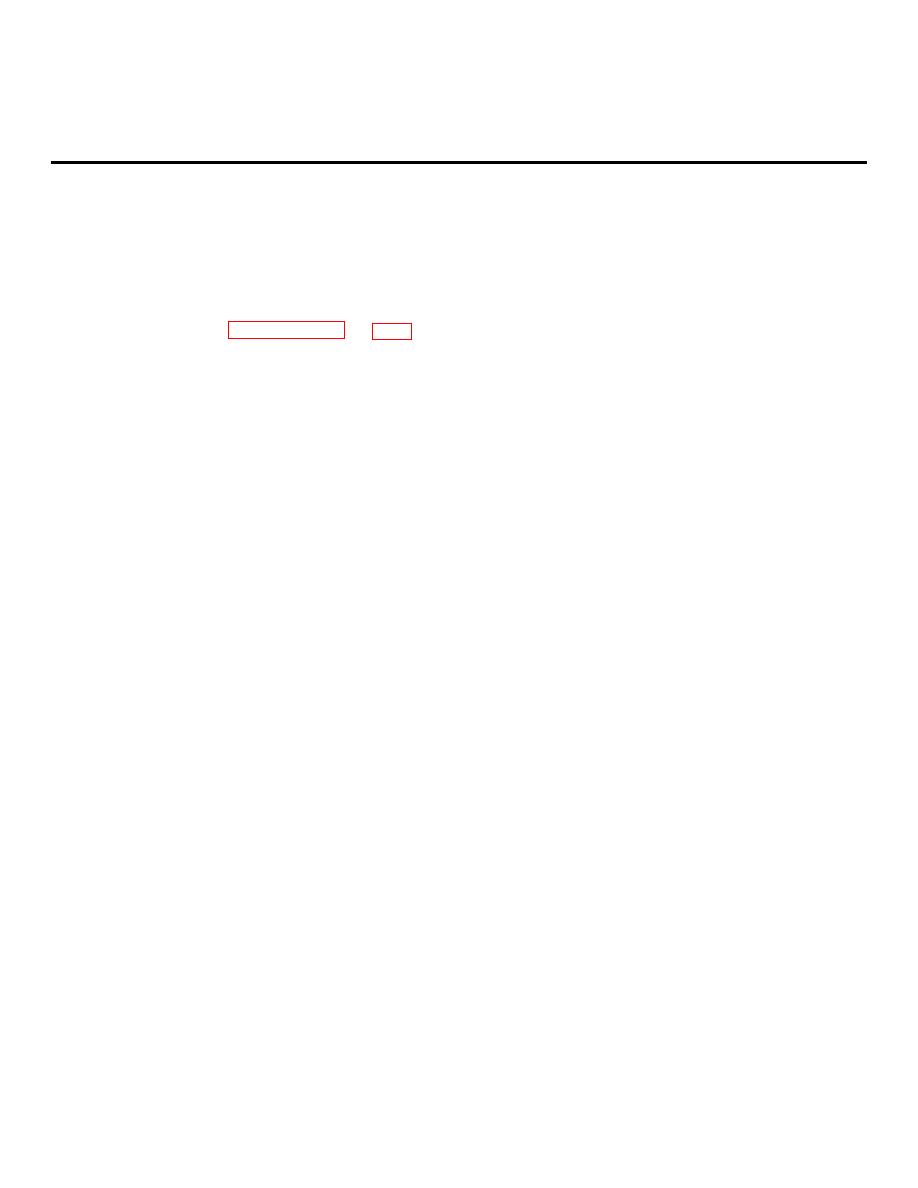 |
|||
|
|
|||
|
Page Title:
CHAPTER 5. PRELIMINARY INSTRUCTIONS FOR TRANSMISSION REPAIR |
|
||
| ||||||||||
|
|
 TM 9-2520-249-34&P
CHAPTER 5
PRELIMINARY INSTRUCTIONS FOR TRANSMISSION REPAIR
d. Avoid Abrasives.
Abrasives, files,
5-1.
Preparing for Repair
scrapers, wire brushes and sharp tools should never be
a. Get Proper Equipment.
used on surfaces where finish is important to the
(1) Proper equipment must be available
operation or sealing of parts, except where specifically
before disassembly is started. This equipment includes
recommended.
a suitable hoist of at least 2-ton capacity, proper hand
e. Removal Agents. Gum or varnish may be
tools and special tools, improvised tools, receptacles for
removed by soaking in dry cleaning solvent or mineral
small parts, work table, wood blocks, oil-soluble grease,
spirits paint thinner and by use of a soft bristle brush.
wiping cloths, and a press.
Crocus cloth may be used to remove minor surface
(2) Refer to paragraphs 3-4 and 3-5 for
irregularities. Lapping compound may be used, if
lists of special and improvised tools and equipment.
required, in valve body bores to prevent valves from
b. What to Discard. Lockwires, lockstrips, and
sticking. Clean thoroughly to remove compound after
gaskets should be discarded at transmission
use.
disassembly. New parts should always be supplied in
f.
Cleaning Oil Passages. A soft wire (brass
such cases.
or copper) may be used to clean oil passages. Always
c. Penalty for Careless Handling. Care must
flush such passages thoroughly after cleaning.
be used to avoid damage to transmission components
g. Steam Cleaning. If steam cleaning is used,
during disassembly, cleaning, inspection, repair, and
dry the cleaned parts immediately with compressed air
reassembly. Nicks, scratches, and dents caused by
and apply a film of clean oil to prevent rusting. Cover or
careless handling may cause oil leakage or improper
wrap parts to protect them from dust of dirt after
functioning and could result in transmission failure. All
cleaning. Never use lye or caustics which will corrode
defective parts must be replaced.
or etch metal surfaces.
5-2.
Cleaning Recommendations
h. Lubricant in New Bearings.
a. Importance of Cleanliness. Cleanliness is
(1) Do not clean the lubricant from new
of utmost importance in servicing the power train. All
bearings. Keep new bearings wrapped until they are to
components must be thoroughly cleaned and kept clean
be installed. Soak bearings, which have been in
throughout the repair process. The presence of foreign
service, in dry-cleaning colvent or mineral spirits paint
matter can cause malfunction, and possible failure, of
thinner to loosen deposit of dirt. Do not spin the
the power train.
bearings during cleaning or drying.
WARNING
(2) After cleaning, turn the bearings by
Forewarn personnel in the immediate area
hand and note any evidence of grit. Reclean them if grit
when using compressed air for cleaning.
is present. Refer to TM 9-214 for further information on
Compressed air, coming into contact with
cleaning bearings.
the human skin, or causing flying metal
5-3.
Inspection and Repair Recommendations
chips, can cause serious injury.
a. Castings, Forgings, Machined Surfaces.
b. Clean
Every
Component.
Every
(1) Inspect all castings and forgings for
component should be thoroughly cleaned after the
breaks, cracks, and wear or scoring that would impair
transmission is disassembled. Cleaning is necessary to
serviceability.
Remove
nicks and small surface
insure effective inspection for wear, damage and
irregularities with crocus cloth or a soft stone.
serviceability of components. Oil lines and the oil cooler
(2) Inspect
all
oil
passages
for
must be thoroughly flushed to remove sludge, or debris
obstructions and dirt. Reclean the passage if necessary.
resulting from mechanical failure.
(3) Inspect mounting faces for nicks,
c. Handle With Care. The utmost care should
scratches and scores. Remove minor defects with
be used in handling of parts during cleaning and
crocus cloth or a soft honing stone. Replace any parts
overhaul operation. Nicks, scratches, dents, or burs can
in which defects which cannot be corrected will impair
prevent proper assembly or cause malfunction after
the operation of the transmission.
assembly. This is especially true of valves and valve
(4) Inspect
threaded
openings
for
body parts.
damaged threads. Chase damaged threads with the
correct size tap.
5-1
|
|
Privacy Statement - Press Release - Copyright Information. - Contact Us |